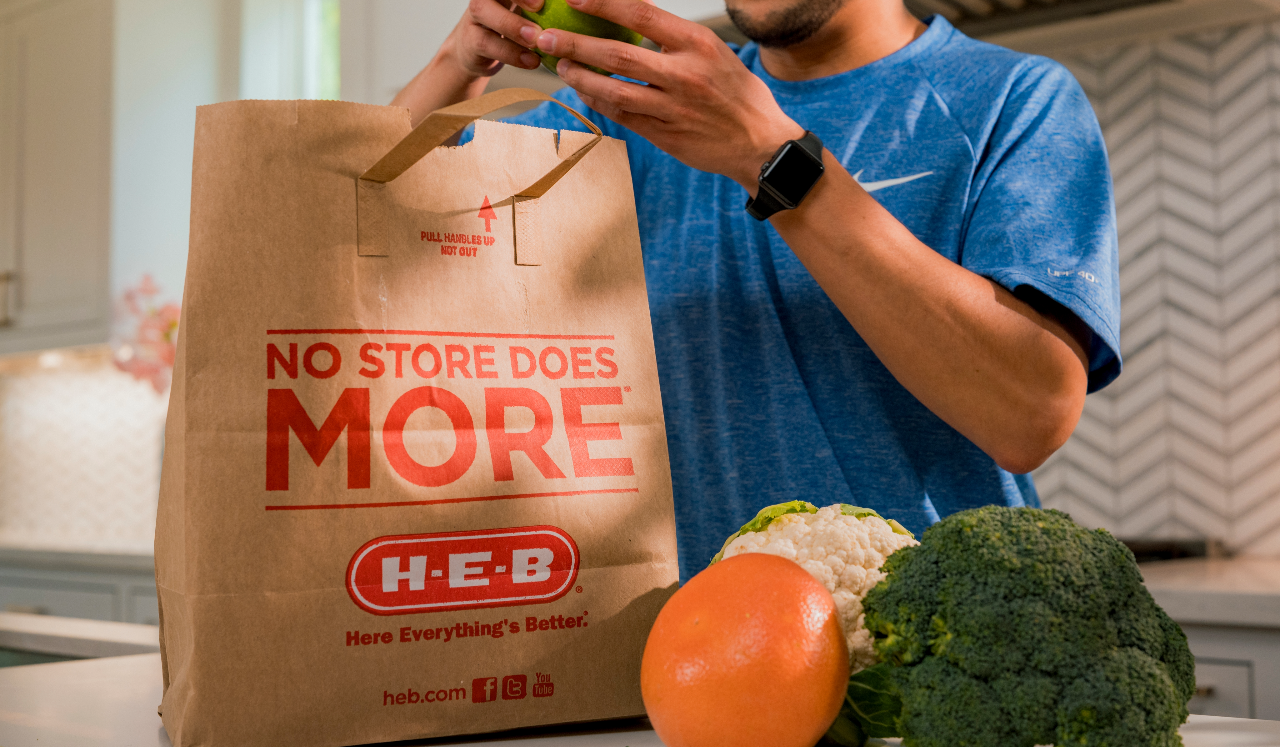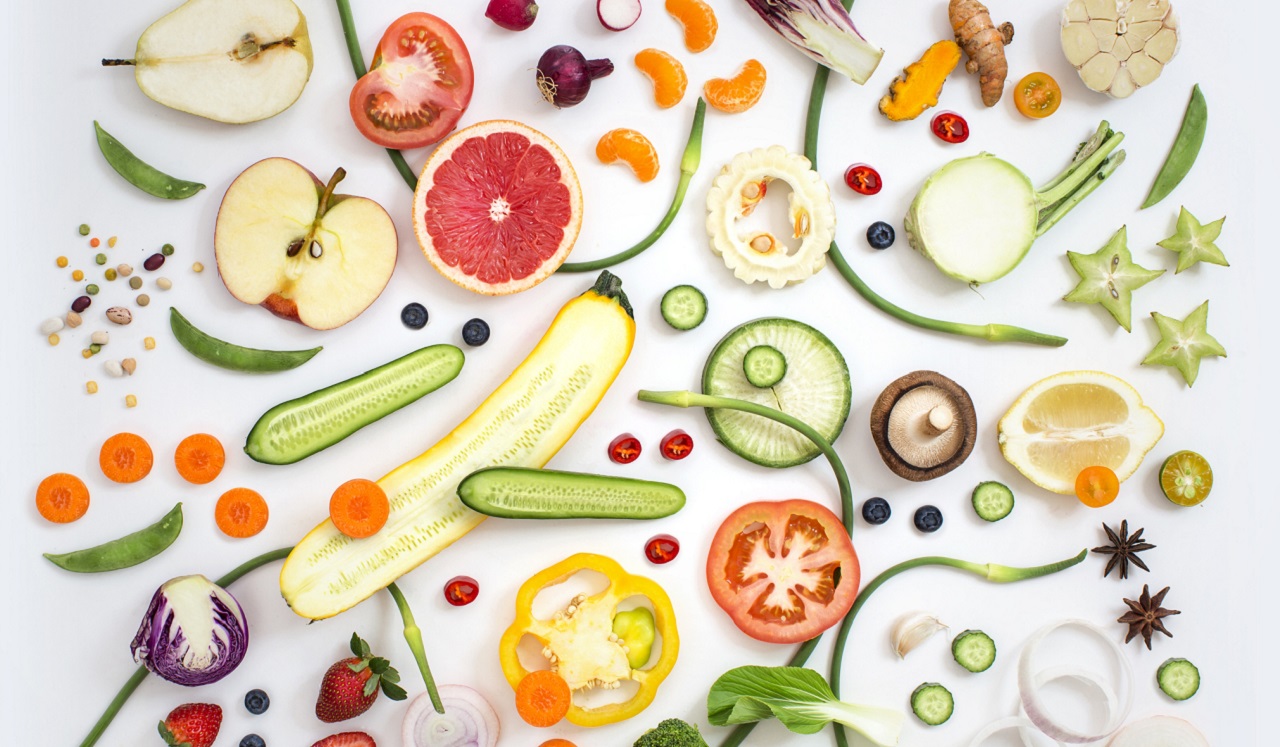“Have a plan,” says JoAnn Breaux, RDN, LD, an H-E-B® dietitian on the wellness nutrition strategy team. “If you shop without purpose, it can become overwhelming.”
To help you plan more productive grocery store trips, we’ve dispelled some common myths:
Myth: You must go to multiple grocery stores to get the best deals.
Truth: Save gas, do research online and you might find a one-stop shop, Breaux says. Start by keeping a master shopping list that you can share with members of your household. Then check supermarket chain apps or websites to compare prices and deals. Also save money by checking your fridge, freezer and pantry to avoid buying food you already have or don’t need.
Myth: Shop the store’s perimeter to stay healthy.
Truth: Frozen, canned and packaged veggies or fruit that are equally rich in vitamins and minerals can be found in stores’ center aisles. And they last longer than fresh food.
Also look for high-fiber grains, pastas, lentils and other beans in the center aisles, she says.
Some stores, including H-E-B®, make it easier to find foods for your needs, by identifying both online and in stores whether an item is high fiber, heart healthy or gluten-free. “You can find the bread or foods that are suitable for your lifestyle.”
Myth: Tempting aisles that are your weakness should be avoided.
Truth: While you might want to skip the candy aisle (or put imaginary blinders on while passing through), keep in mind that the frozen dessert aisle often has healthy frozen fruit at one end.
Myth: Buying nutritious foods is more expensive.
Truth: Buying healthy foods isn’t more or less expensive than unhealthy foods, but your choices still should hinge on your nutrition priorities, Breaux says.
Hot dogs may be cheaper than ground beef, but they’re not a healthy option if you’re trying to shave salt from your diet. Instead, you can buy meat in bulk, then package it in smaller portions before freezing.
In-season fruits and vegetables may be less expensive than when they’re off-season. A bag of beans costs less than packaged refried beans but consider what’s most feasible for your lifestyle.
Myth: You’ve left the store. Mission accomplished!
Truth: Not so fast. When you get home, stock your items with care. “Use the first in, first out method,” she says. “Place food that expires sooner in front of those that last longer.” For example: Apples, which last longer, go behind bananas. Carrots go behind lettuce. And rice or bagged potatoes go behind bread. Sliced bread also can be refrigerated or frozen so that it lasts longer, along with your oatmeal and frozen waffles.
Myth: You should wash produce as soon as you get home.
Truth: “There’s no need to wash berries, fresh fruit or veggies upon unpacking them,” Breaux says. “When you wet them, it creates the ideal environment for bacteria to grow.” Instead, wash your produce when you're ready to use it.
Myth: To get enough protein in your diet, you must eat meat.
Truth: Higher protein breakfasts and dinners will help you with weight loss goals. “Protein helps with satiety, so you feel fuller longer.” But that doesn’t mean you have to eat meat to get that protein.
Try eggs, which are affordable, valuable and nutrient dense, she says. “For what you’re getting compared to meat, they’re easy to use and last a good while in the fridge.” Hard-boiled eggs with shells last four to seven days.
Strive to pack your diet with vitamin and mineral-rich foods, such as eggs, veggies, fruits, whole grains, seafood, lentils and beans. Ideally you should get 25 grams or more of protein per meal.
Myth: Eating healthy takes too much preparation time.
Truth: You can find nutritious pre-made meals. Just study the labels and know what levels of calories, salt or sugar you’re willing to accept.
You often can view nutrition facts online and in stores, identifying whether items are low-carb, gluten-fee or no-sugar-added.
H-E-B®, for instance, has a line of foods called Higher Harvest. They can include low-carb bread, dairy-free yogurt and no-sugar-added frozen desserts.
Myth: If your kids will only eat macaroni and cheese, you can forget about veggies.
Truth: You can boost the nutrition of pasta by adding cottage cheese, frozen broccoli and mashed canned cannellini or butter beans.
Breaux suggests mashing peas, edamame and other beans with avocado to make
higher-protein guacamole. “Anything green works.”
Myth: Children won’t eat healthy sack lunches.
Truth: Try a tasty deli meat wrap made with a high-fiber tortilla, low-salt deli meat, cheddar or hummus. Sliced carrots, whole-grain pita chips and an apple make nutritious sides.
Get Your Daily Dose of Health & Wellness
Sign up to receive the latest articles in your inbox.


